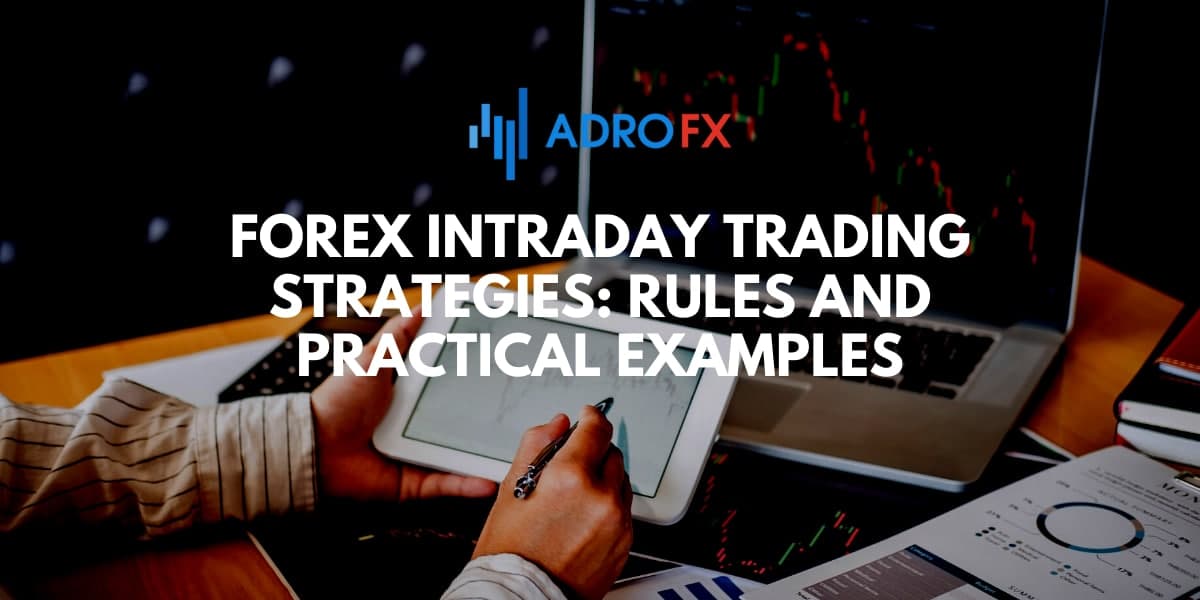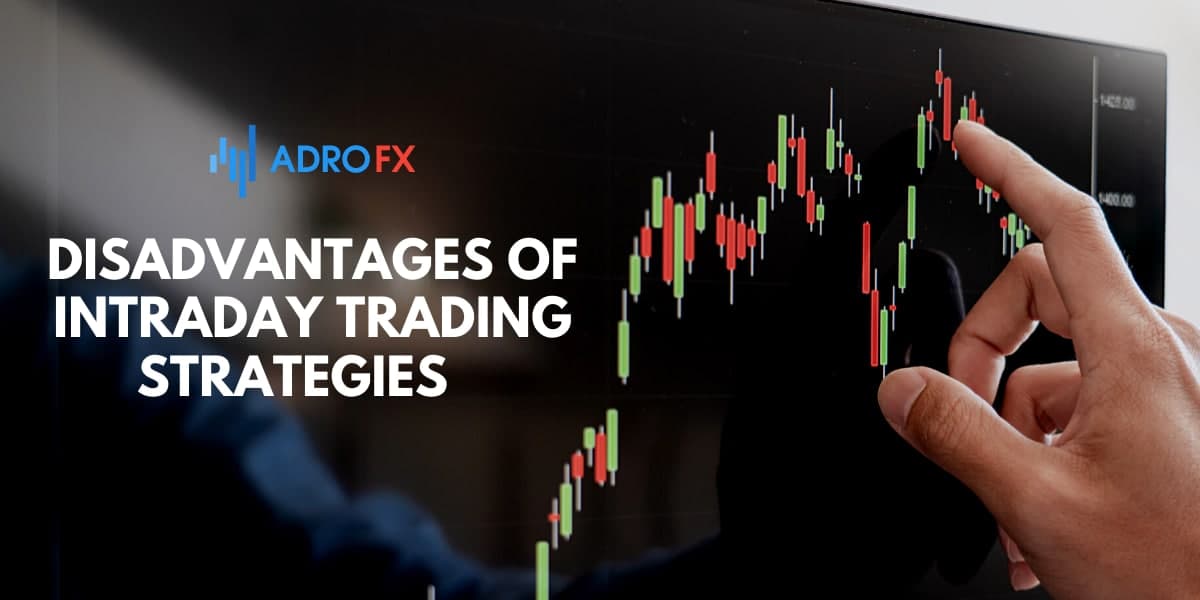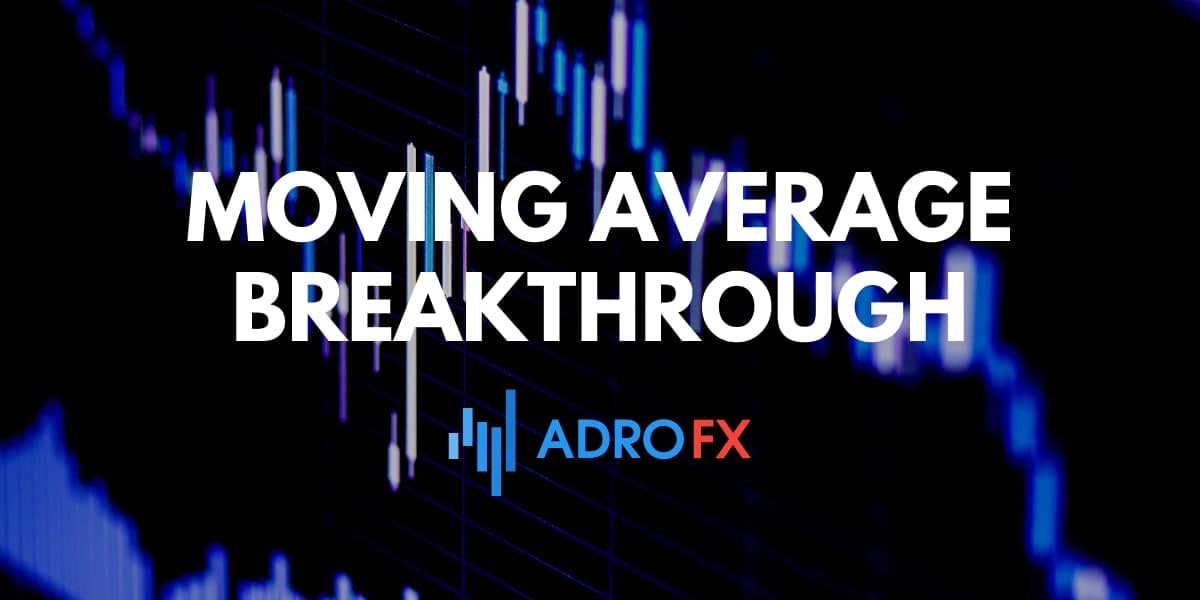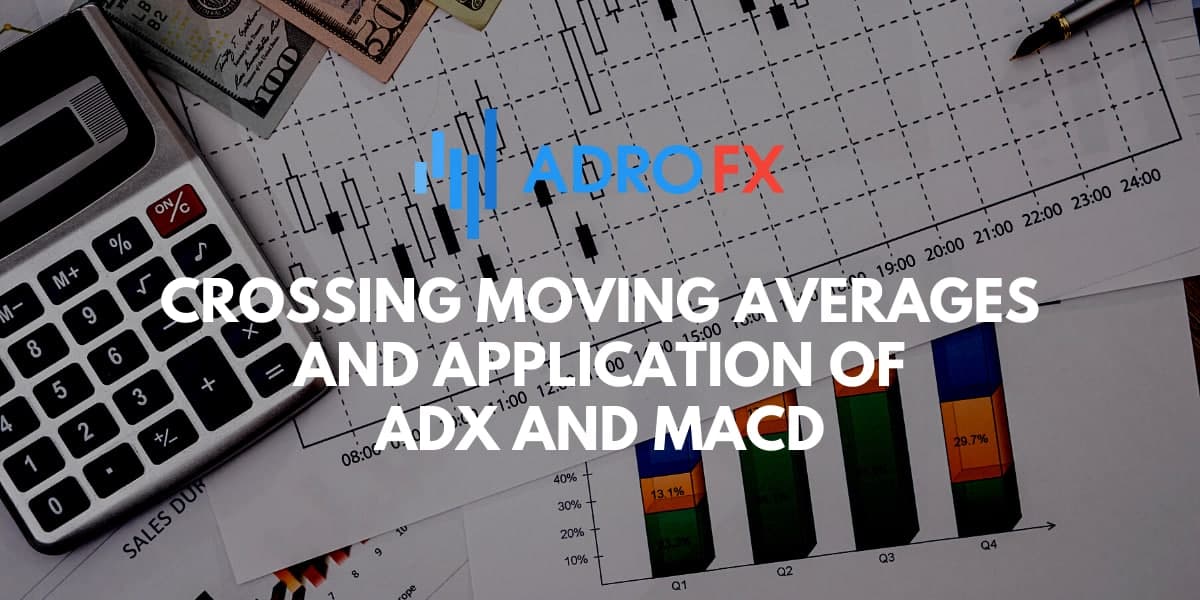Forex Intraday Trading Strategies: Rules And Practical Examples

If there is a way to gain some return during routine days on the market, it can be done with the proper forex intraday strategy. One-day trading or day-trading is overgrown with myths that it is difficult to open an entry point and plan a position by this method. Practice shows that with the right strategy and considering the main principles of trading, it is quite realistic to succeed. The only nuance of intraday: this method is not suitable for everyone since it requires perfect self-discipline and a lot of time.
Let's find out what this approach means, the rules for intraday trading, the advantages and disadvantages of this trading strategy, and whether it makes sense to refer to intraday forex trading.
What Is An Intraday Trading Forex Strategy?
Although intraday trading is a subject of numerous discussions, it is a viable way to take advantage of the stock/currency markets.
Its "loss ratio" is mainly caused not by the ineffectiveness of the intraday concept as such. Still, it is very popular with inexperienced traders, who blindly follow the "trading guru" buying authoring indicators and electronic Expert Advisors and, therefore, lose their deposits.
The truth is that intraday trading brings earnings only to those who already have knowledge, skills, experience, and discipline, which takes months and years of trading. To put it simply, professionals.
So, let us start one by one, from the very beginning. Intraday trading is regular trading, but with an emphasis on strategies with lower time frames that allow positions to be opened and closed during the same trading session.
Experienced day traders have more flexibility and less stress than traditional swing traders. Instead of opening and holding positions for long periods, which can lead to constant monitoring and market movements in the opposite direction, intraday trading focuses on short-term intraday swings.
Lower time frames and more frequent trades allow you to scalp the market and accumulate returns. Because of the high frequency of trades, the size of market movements is usually smaller. That allows many successful trades in a single trading session, which can often generate more gains than an individual trade.
With day trading, there is less temptation to try to identify market tops or bottoms to maximize earnings. Day trading can be successful for those who take it seriously or for those who do it in their spare time.
Intraday trading is often seen as the ideal career for those who can make it their only source of income. Day traders can work from anywhere with an internet connection. All it takes is finding the best day trading strategies that work and implementing them regularly.
So, who is intraday trading suitable for? As in any other business, success completely depends on the trader's qualities. It requires focus and concentration, high-stress tolerance, the ability to work at a very fast pace, and not to react to short-term failures. Unlike many other strategies, intraday trading does not require patience, and for many traders who don't want to wait long for their results, this can be a very tangible advantage.
Frequently Asked Questions About Intraday Trading
What is intraday trading?
It is a style of forex trading that is limited to a specific trading day and does not go beyond it. Day traders close their positions on the same day that they opened them. They can also make several trades with the same asset during the day, or with several different assets. That is, they close all trades by the end of the trading day and do not hold open positions overnight. The volatility of the chosen trading assets and the average daily range are two key factors affecting the trading efficiency of day traders. They are experts in entering and exiting trades quickly and efficiently, which allows them to provide the earnings they make from their trading activity.
Is it possible to trade stocks intraday?
Of course, you can, but it won't be as dynamic as trading with leverage. And that's okay because trading on the stock market is considered a much safer type of investment than margin trading.
What time frame is better to trade intraday?
Working periods for intraday trading are all time frames that belong to the short-term. However, you should remember that when trading during the day, you should follow the market condition in general. Therefore, when trading on M5-M30 time frames it is highly recommended from time to time to check the "hour chart", and before trading - the daily chart, to avoid unpleasant surprises.
How much can I earn with one trade-a-day forex trading strategy?
From the many definitions, it can be concluded that this is a highly successful type of trading. The use of such a strategy may well double the deposit for a trading session. According to the developers, the back-tests of these trading systems at certain time frames show the returns of 1000% and 3000% per annum.
At the same time, the yield for a single time interval does not guarantee a constant result. It is also necessary to note that the complexity of trading and high requirements to the professionalism of a trader reduces the probability of organization of work according to all rules of such trading systems. In simple words, it will be extremely difficult for most traders to organize their trading correctly.
How much funds do I need to start forex intraday trading?
There is no definite answer to this question. The minimal deposit at the brokers can be from 10 to 500 dollars, depending on the account type and commissions. The minimum deposit sufficient to work with a 0.01 lot position starts at $10, but this does not mean that you can earn on such an amount.
For example, you have decided to open a trade on the AUD/CHF. To open a 0.15 lot with a quote of 0.66737 and 1:200 leverage, you would need $50.05. This currency pair moves 30-80 pips in a day. In this case, each pip will cost $2.54. If you trade 25 pips in a day, you will earn $63.5.
Understanding the minimum amount you need to trade forex depends on the size of the lot you enter a trade with. The higher the lot, the larger the deposit needs to be. That is due to the broker's requirements for collateral (margin). Margin, which is taken by the broker when opening position looks like this - on the account is frozen required sum, which is calculated from price quotation and the size of leverage.
That is why the brokers' minimum deposits often start from $300 to prevent the client from risking all of his funds on the first trade.
Is it reasonable to trade intraday?
Day trading is not suitable for all traders. There are several reasons for that:
- Not every trader has much free time to spend the whole day at the trading terminal.
- It is a monotonous and routine occupation, you cannot get new knowledge here, there are no prospects of growth and development, and trading involves constant worries and doubts.
- You must have a strong nervous system because positions are almost always open, and the balance changes lightning fast. Not everyone can "not break".
- The gain of intraday traders is usually insignificant because they aim to benefit from insignificant price fluctuations. One should not forget about the spread that partially consumes the income. Intraday traders are considered the main source of the brokerage companies' earnings, as their yield depends on the trading turnovers of the market participants.
Advantages Of Intraday Forex Strategies
There is an opinion, and it is quite fair, that intraday forex trading is the most difficult type of trading. This is not the most successful method of forex trading for beginners. To work intraday, it is necessary to have wide experience in trading, to be able to conduct the forex market graphic analysis correctly, have deep knowledge in technical analysis, but most importantly - to have a will of steel, iron nerves, and unwavering discipline.
It's difficult to have all these qualities at once. That's why there are so few truly successful intraday traders. However, intraday trading has its own advantages, which time after time attracts more and more adherents.
- Higher return percentages because intraday trading deals with all price fluctuations during the day. If a mid-term trader works in one direction, as a rule, the trend direction, then the intraday trader intercepts movements in different directions.
- Possibility of more flexible behavior on the market. As you know, the market is a little predictable. Yesterday all the analysts based on their brilliant strategies, predicting the movement upwards, and today it is going downwards, contrary to all predictions. Intraday traders are able to reconsider their bets in the opposite direction according to the situation. Mid-term and long-term traders can "hang on" for a long time with their losing trades.
- The presence of clear boundaries between the working day and the vacation time. An intraday trader works during the day. As a rule, all the deals are closed by nightfall. And a trader can quietly sleep, rest, not being psychologically attached to the exchange. It is quite a different matter with medium- and long-term traders. Their trades are kept open for several days, sometimes even weeks, keeping the trader in constant psychological tension and worrying about the fate of the position.
- Eliminating market uncertainty. The market moves in trends, but many factors can turn everything upside down. The higher the time frame, the more room for "surprises". Intraday trading reduces this risk almost to zero.
- Fast results. Traders get the return on trades immediately. It's a plus for those who don't want to spend days and weeks hypnotizing the chart, waiting for the price to drop.
- More trading signals. Intraday trading is very lively.
- Easy decision-making. One of the tenets of technical analysis is that price includes everything. The trader does not need to delve into the maze of fundamental analysis - only the bare price chart and indicator indicators.
Disadvantages Of Intraday Trading Strategies

But still, for many, the disadvantages of trading intraday on forex outweigh the pros. For example:
- When trading intraday, traders, as a rule, choose working time frames no higher than one hour. They mainly work on five-minute and fifteen-minute time frames, sometimes even going down to the minute time frames. And the work on the minute time frames is largely work with the "informational noise" of the market, where only a very, very experienced trader can distinguish the main price movement from the movement, provocation, short-term price spikes on the news, etc. Forex beginners usually cannot do that.
- The intraday trader must permanently pay attention to the market. An intraday trader is chained to the screen from morning till night. In contrast to medium- and long-term traders, who can only come up to the monitor from time to time to control the process.
- It is not so easy for an intraday trader to determine the acceptable mathematical expectation of a trade. Stops, as a rule, are short, but intraday traders' Take-Profits are small, too. They rarely catch global trends. It is therefore very important for them to have a perfect intraday trading strategy that allows them to make a statistically larger amount of positive trades than negative ones. While medium- and long-term traders can afford to have a greater percentage of negative entries due to a more favorable Stop-Loss and Take-Profit ratio.
- Higher trading costs. By trading intraday, traders open many trades. Each intraday position includes the payment of spread or other brokerage commissions. These costs can actually reduce overall earnings potential.
- The need to make quick decisions. To take full advantage of intraday trading, you need to be able to make the right decisions quickly.
Of course, how and on what time frames to trade, each trader decides for himself, but, strangely enough, those who have survived in the market, trading on "small" charts, and gained some trading experience, sooner or later switch to medium-term trading, giving place at the monitors to Forex beginners. Obviously, this process is eternal.
5 Safe Forex Strategies For Beginners And Advanced Day Traders
Now, we will analyze several beneficial strategies that are quite easy to apply for intraday forex trading:
- trading in a price channel;
- trend breakout;
- moving average breakthrough;
- crossing moving averages and application of RSI and Stochastic;
- crossing moving averages and application ADX and MACD.
Intraday forex trading can be either positional or scalping. The latter is more difficult because a trader must constantly sit at the monitor and place a large number of trades, earning anywhere from a few to a few tens of pips on each trade. Positional trading is much easier in this regard. A trader just waits for a signal according to his strategy and enters the market as soon as he gets it. At the same time, trades can be kept in the market from a few hours to several days.
Trading In The Price Channel Strategy
As you know, market prices move in waves, often forming price channels. The boundaries of the channel act as resistance and support for the price, from which it bounces very well:
Above there is a chart of the price of gold whose movement showed a clear upward price channel. From January 30 to December 2, the price formed two peaks at points 2 and 4, and two troughs at points 1 and 3 on the chart. Connecting these two points gives us a channel indicating the future price direction.
The rules for trading in the channel are very simple. If the price approaches the upper limit of the channel and rebounds from it, you can consider selling to collect returns when the price approaches the lower limit of the channel. It will be possible to buy when the price rebounds from the lower line of the channel with the Take-Profit level near the upper line.
In our example with gold, you could sell after the price rebounds from the upper resistance line of the channel at point 4 with Take-Profit at point 5. We could buy after the price bounce from the lower support line in point 5, with Take-Profit in point 6. And from point 6, sales could be considered again.
Trend Breakout Strategy
Now let's move on to the trend breakout strategy. The figure shows the chart of the currency pair of US dollar and Japanese yen.
On the chart, the price first showed a downward movement, and then broke out the upper limit of the channel and went up by a big impulse. As you can see, the trend line held the price well enough from February 06 to 08, but the next day, the market still broke out the downtrend and went up. The trend breakout point is a great point to buy this currency pair.
If we compare the two strategies - trading in the channel and trend breakout, then we can say that they are both good for finding entry points into the market. As for exiting the market, you can always see clear yieldtargets in the channel, which is not the case with breaking out of trend lines. In the latter case, it is best to apply a fixed Take-Profit linked to the stop.
Moving Average Breakthrough

Trading by this method is conducted on a daily time frame on any trading instrument. The strategy uses two indicators - Moving Average and RSI. Moving Average settings - period 5, MA method - Simple, applied to close - Сlose. RSI indicator settings - period 14, levels 30, 50, and 70. Trading is based on the price breakthrough of the moving average line.
Market entry points:
Buy - the candle breaks out the SMA and goes up 10-20 points, while the RSI indicator is above the 50 level;
Sell - the candlestick breaks down the SMA and goes down 10-20 points, while the RSI indicator is below 50.
Since this is a forex intraday strategy, the exit from the market should be done at the close of the candle or at the end of the trading session in which the trade is conducted.
Crossing Moving Averages And Application Of RSI And Stochastic
This strategy is based on four indicators: Moving Average (5), Moving Average (10), RSI and Stochastic. Instruments with good daily volatility are recommended for trading.
Indicator settings are as follows:
Moving Average (5) - exponential moving average with a period of 5;
Moving Average (10) - exponential moving average with period 10;
RSI - period 14, levels 30, 50, and 70;
Stochastic - parameters 14, 3, 3.
Trading is based on moving averages crossover on the price chart. Market entry points:
buy - EMA-5 crosses EMA-10 from bottom to top, Stochastic is moving up, and RSI indicator is above the 50 level;
Sell - EMA-5 crosses EMA-10 from above, Stochastic moves downward, and RSI is under the 50 level.
It should be noted that the exit from the market according to this strategy is performed at the backward crossover of moving lines.
Crossing Moving Averages and Application of ADX and MACD

This strategy is similar to the previous one, but instead of RSI and Stochastic indicators ADX and MACD are used.
The settings are as follows:
Moving Average (7) - exponential moving average with period 7;
Moving Average (21) - exponential moving average with period 21;
ADX - period 14;
MACD - parameters 12, 26, 9.
It is recommended to use a one-hour time frame in trading. Trading rules:
buy - EMA-7 crosses EMA-21 from bottom to top, MACD indicates an uptrend, and ADX indicator is above the 25 level;
Sell - EMA-7 crosses EMA-21 from above to below, while MACD indicates a downward trend and ADX is above the 25 level.
If we compare strategies built on the breaking through of moving averages, it is worth saying that the big plus in them is the accurate entry signals when the market is very volatile. Exit points from the market will be a little more difficult, as false signals at the crossing of moving averages are common, which should be filtered by additional indicators or use a candlestick analysis.
You might be wondering by now if there are some secret tips for intraday forex trading. We will have to disappoint you. Unfortunately, there are no magic secrets that can make intraday trading 100% successful.
But there are general recommendations that you can follow to improve your trading performance:
- Always have a plan. Number one in my rating of useful tips for intraday trading. What we will trade and how exactly, what strategies we will use - first we plan, then we trade.
- Assess the risks. The most important thing is to determine in advance a budget for one trading session and stick to it. Do not react emotionally, if the market is "going too fast", do not get even for the failures.
- Be technological. For intraday trading, at a minimum, you need fast Internet with a good ping and a productive PC or mobile gadget. At moments when fractions of a second decide everything, any slowdowns and lags are unacceptable. So don't be a cheapskate.
- Keep learning. Markets evolve, and we need to evolve with them. Loss of relevance is loss of return.
- Always stick to the entry and exit rules. There is no such thing as "perfect entry and exit." There is only discipline. Emotional trading always ends up draining your deposit. Just accept it as a given.
Document successes and failures. Keeping a trading log, keeping track of previous trades, is always good advice. This information is invaluable when developing and refining our intraday trading strategies.
Conclusion
Intraday trading takes time, skill, and discipline, but it is on the list of strategies for traders who plan to succeed and make significant returns. Remember that there is no such thing as a perfect strategy. Be willing to modify, improve and combine different approaches to get the most promising results. Applying forex intraday strategy is a great way to make significant yields if you manage your risks correctly and stick to your plan. Make sure to check your percentage of successful trades and keep it above 50%, as well as choose your leverage according to your strategy, and intraday trading may bring you 5-15% return per month.
About AdroFx
AdroFx is an international brokerage company, offering a wide range of online trading services in currencies, stocks, cryptocurrencies, and precious metals. Founded in 2018, officially registered in Saint Lucia.
The company is distinguished by one of the best trading conditions on the market, minimal spreads, market order execution, and leverage up to 1:500. The broker is perfectly suited for strategy testing and automated trading systems due to micro accounts, ECN/STP order execution, and the absence of restrictions on using trading strategies.








